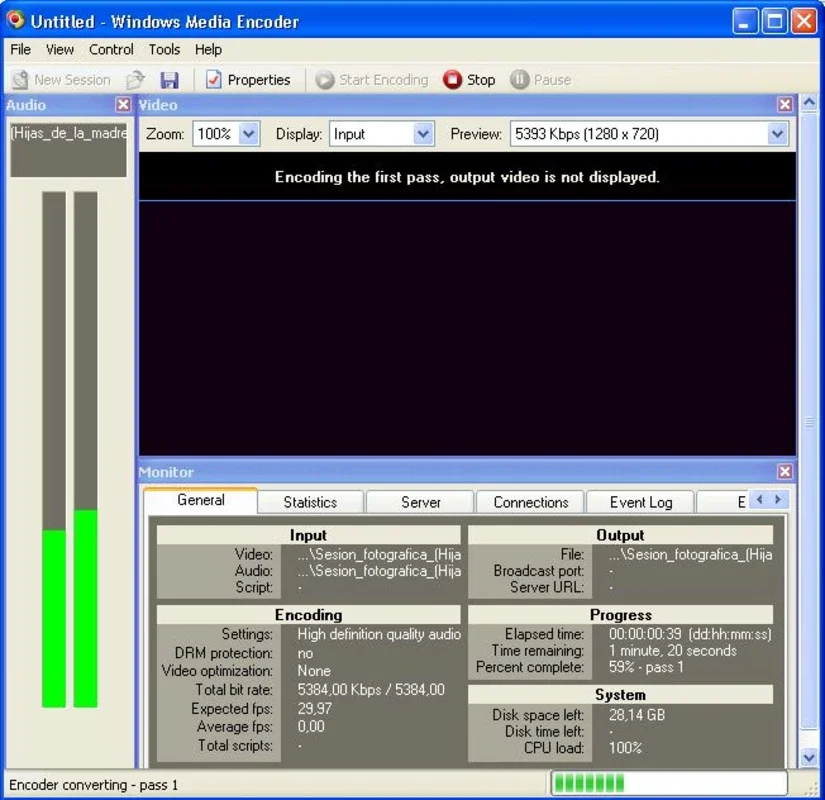Windows Media Encoder App Introduction
Windows Media Encoder, while not as prevalent as modern video editing software, holds a significant place in video processing history. This guide delves into its capabilities, features, and historical context, comparing it to contemporary solutions.
Introduction: Windows Media Encoder's Legacy
Developed by Microsoft, Windows Media Encoder was a powerful tool for capturing, encoding, and streaming video. Its heyday was during the rise of the internet and the need for efficient video compression and distribution. While largely superseded by more modern and feature-rich software, understanding its functionality offers valuable insight into the evolution of video technology.
Key Features and Capabilities
Windows Media Encoder provided a robust set of features, including:
- Video Capture: Direct capture from various video sources, including capture cards and webcams.
- Format Conversion: Encoding videos into various formats, such as Windows Media Video (WMV), enabling compatibility across different devices and platforms. This was crucial in an era where format standardization wasn't as established as it is today.
- Compression Options: Offering various compression codecs and bitrate settings, allowing users to balance video quality and file size. Users could fine-tune the compression to optimize for different bandwidths and storage capacities.
- Streaming Capabilities: Enabling live streaming of video content over the internet, a groundbreaking feature for its time. This facilitated early forms of online broadcasting and video sharing.
- Advanced Settings: Providing advanced options for deinterlacing, ensuring compatibility with various playback devices and preventing visual artifacts.
- Ease of Use: Despite its advanced features, Windows Media Encoder offered a relatively user-friendly interface, particularly for its time. A step-by-step guide assisted novice users in navigating the software.
Comparison with Modern Software
Compared to modern video editing and encoding software like Adobe Premiere Pro, DaVinci Resolve, and HandBrake, Windows Media Encoder lacks the sophisticated editing capabilities and extensive format support found in these contemporary tools. Modern software offers a far wider array of effects, transitions, and color grading options. Furthermore, they often support a broader range of input and output formats, including newer codecs and high-resolution video.
However, Windows Media Encoder's simplicity and focus on encoding and streaming were valuable assets in its time. Modern software, while more powerful, can be significantly more complex to learn and use.
The Evolution of Video Encoding
The development of Windows Media Encoder reflects the historical evolution of video encoding technology. The need for efficient compression algorithms to handle video data, especially over limited bandwidth connections, drove innovation. The software's reliance on WMV highlights the importance of proprietary codecs in the early days of digital video. Today, open-source codecs like H.264 and H.265 are more prevalent, offering better compression efficiency and wider compatibility.
Windows Media Encoder's Place in History
While largely obsolete, Windows Media Encoder played a crucial role in the development and popularization of online video. It empowered early content creators and broadcasters to share their videos with a wider audience. Its legacy lies in its contribution to the evolution of video encoding and streaming technologies, paving the way for the sophisticated software we use today.
Conclusion
Windows Media Encoder represents a significant chapter in the history of video technology. While its features may seem limited compared to modern alternatives, its impact on the early development of online video and video encoding cannot be understated. Its user-friendly interface and focus on essential encoding tasks made it accessible to a broad range of users, contributing to the growth of online video content in its time. Understanding its capabilities provides valuable context for appreciating the advancements in video technology that have occurred since its release.
